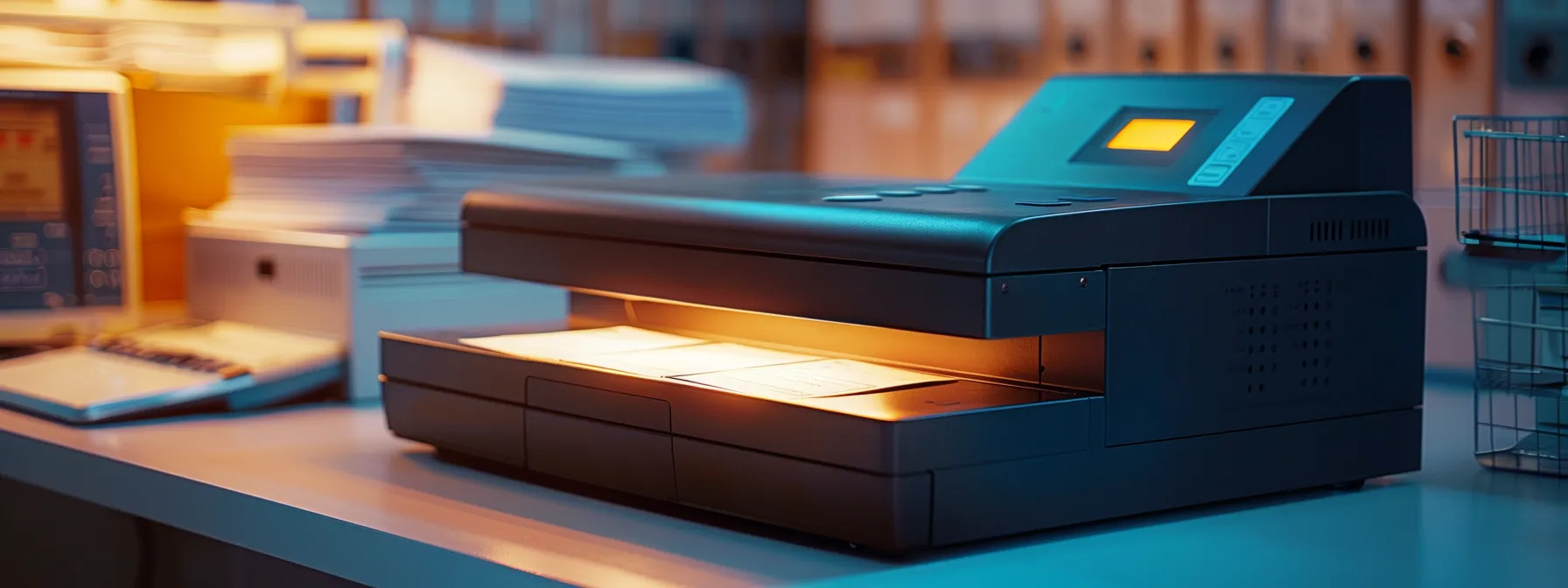Cheque fraud remains a significant risk for businesses and individuals alike. Statistics show that many customers suffer losses due to scams targeting their financial information, including their social security number. In this post, readers will discover effective security measures to protect their cheques, best practices for writing and issuing them, and the role of digital solutions in enhancing cheque security. By understanding these tips, readers can safeguard against frauds and ensure their financial transactions remain secure, ultimately preserving their hard-earned resources.
Understand Cheque Fraud Risks and How They Affect You

Cheque fraud is a significant concern that affects both individuals and businesses. Various types of check fraud, including theft and wire fraud, pose serious threats to financial security. Understanding the impact of these financial crimes can help in recognizing the red flags associated with fraudulent checks. Knowledge of fraud prevention strategies, such as utilizing biometrics, is essential for safeguarding against these risks.
Types of Cheque Fraud to Watch For
Cheque fraud manifests in various forms, with some of the most common types including forgery and counterfeit cheques. Consumers must stay vigilant against situations where individuals may alter legitimate cheques or produce fake ones to exploit unsuspecting victims. According to the United States Postal Inspection Service, the risk increases when transactions involve unsecured methods, prompting consumers to be cautious about who they accept cheques from and how they verify their authenticity.
Another prevalent type of cheque fraud includes the use of stolen cheques, often linked to larger financial crimes such as identity theft and debt scams. Businesses are particularly vulnerable as thieves may target accounts payable departments, leading to significant losses. By staying informed about these fraud methods and implementing preventive measures, organizations can safeguard against financial pitfalls and heightened interest rates resulting from unforeseen liabilities.
The Impact of Cheque Fraud on Consumers and Businesses
Cheque fraud poses significant risks, impacting both consumers and businesses through heightened exposure to identity theft and scams. When fraudulent activity occurs, it can lead to unauthorized access to sensitive information stored in databases, affecting individuals’ financial security and trust in traditional payment methods. Victims often face mounting stress as they navigate the complex process of recovering lost funds and reporting fraud to authorities, underscoring the importance of effective anti-fraud measures.
For businesses, the stakes are even higher, especially for those with accounts payable departments that can be targeted by thieves. The loss of funds through cheque fraud can disrupt operations and harm vendor relationships. To improve security, organizations should consider using secure delivery methods, such as a post office box, to receive cheques, along with robust internal controls to verify payment authenticity. These proactive steps can help mitigate the risks associated with cheque fraud and protect valuable financial resources.
Recognizing Red Flags Associated With Fraudulent Cheques
Recognizing red flags associated with fraudulent cheques is essential for effective fraud detection. Signs such as alterations in the document‘s appearance, incorrect formatting, or inconsistent information can indicate potential forgery. According to the American Bankers Association, being attentive to unusual patterns in cheque issuance or sudden changes in payee names can significantly help in identifying potential fraud. Businesses should train staff to be aware of these indicators to safeguard their financial interests.
Phishing attempts often target unsuspecting individuals, leading to fraudulent cheque transactions. Victims may receive communications that appear legitimate but are designed to extract sensitive information or authorize unwarranted payments. Staying educated on these tactics helps individuals and businesses maintain vigilance. Developing a routine for verifying cheque authenticity can mitigate these risks, protecting assets and fostering trust in business transactions.
Fraud lurks in the shadows, waiting for a chance. To keep your cheques safe, strong security measures are your best defense.
Implement Strong Security Measures to Protect Your Cheques

Using high-security cheque printing technology is crucial in preventing cheque fraud and protecting financial assets. Additionally, selecting safe locations for cheque storage can significantly reduce risks, ensuring documents are kept secure. Regular monitoring of cheque books helps track any unauthorized activity, providing peace of mind regarding expenses linked to savings accounts. Each of these measures contributes to a comprehensive strategy against potential financial crimes.
Use High-Security Cheque Printing Technology
Utilizing high-security cheque printing technology is essential for protecting sensitive financial details, including a bank account number and personal data. By incorporating advanced security features such as watermarks, micro-printing, and specialized inks, businesses can significantly reduce the risk of cheque fraud. These enhancements provide an extra layer of protection, ensuring that unauthorized individuals cannot easily replicate or tamper with cheques.
Moreover, automating the cheque printing process allows for greater control over cheque creation and distribution, further minimizing fraud potential. For instance, companies that manage their payroll or mortgage payments can streamline their operations while ensuring each cheque meets high-security standards. This proactive approach not only safeguards financial assets but also instills confidence in clients and vendors alike as they engage in transactions.
Select Safe Locations for Cheque Storage
Selecting secure locations for cheque storage is an important aspect of risk management in accounting practices. For businesses, keeping cheques in locked cabinets or safes can prevent unauthorized access and reduce the likelihood of counterfeit cheques being created or accessed. Individuals managing personal finances, such as those dealing with student loans, should also ensure that their cheques are not left in plain sight and are stored in secure, discrete areas to protect against fraud.
Additionally, businesses should implement procedures for monitoring cheque storage areas regularly, ensuring that only authorized personnel can access this sensitive information. Using digital storage solutions with encryption for cheque records can further enhance security and maintain control over bank account details. By prioritizing safe storage options, both businesses and individuals can significantly lower the risk of cheque fraud and protect their financial security.
Monitor Your Cheque Book Regularly
Regularly monitoring a cheque book is a critical practice for preventing fraud, helping individuals and businesses safeguard their financial resources. Keeping a close eye on each transaction ensures that any unauthorized activity can be quickly identified and addressed. Utilizing advanced tools, including machine learning software, can enhance the tracking process, providing sophisticated analysis that flags unusual patterns or discrepancies in account activity.
In accordance with legal guidelines surrounding cheque usage, having a structured approach to cheque monitoring contributes significantly to reducing risks. This vigilance not only protects against potential cash theft through counterfeit cheques but also strengthens the integrity of Automated Clearing House (ACH) transactions. By fostering a habit of regular cheque book reviews, individuals and businesses establish a proactive defense against fraud-related challenges.
Even with strong security measures in place, the proper way to write and issue cheques matters greatly. Let’s look at some best practices that help ensure your cheques serve their purpose and keep your business safe.
Adopt Best Practices in Writing and Issuing Cheques

Limiting information on cheques is a fundamental step in fraud prevention. Employing security features such as watermarks and microprint techniques further protects sensitive details. Additionally, using secure mailing methods can safeguard against interception. These best practices are essential for effective wealth management and securing business banking transactions, ensuring that cheque-related activities maintain the highest level of integrity.
Limit Information on Your Cheque
Limiting information on a cheque is a fundamental step in preventing cheque fraud. When writing a cheque, it is crucial to include only the essential details, such as the amount, payee name, and signature. By omitting unnecessary personal information, such as the address or the purpose of the payment, individuals and businesses can make it more challenging for fraudsters engaged in check kiting or check fraud detection to misuse the cheque for unauthorized transactions, ultimately protecting their financial interests.
Moreover, ensuring that cheque formats adhere to high-security standards can further minimize risks. For instance, utilizing security features like specialized inks and intricate designs can deter attempts at counterfeiting. By focusing on limited yet critical information printed on cheques, businesses can not only secure their currency against fraudulent activities but also build trust with clients and vendors regarding their prudence in protecting financial information from cheque fraud.
Employ Watermark and Microprint Techniques
Employing watermark and microprint techniques is an effective strategy for businesses aiming to deter cheque fraud. These security features involve using specialized ink to create invisible watermarks that are difficult to replicate, enhancing the overall integrity of the cheques. Financial institutions recognize the importance of these methods, as they provide an additional layer of protection, allowing businesses to confidently process payments and protect their hard-earned assets.
Furthermore, microprinting involves printing tiny text that is only visible through magnification, making it challenging for counterfeiters to forge cheques. By integrating these advanced techniques into their cheque writing practices, businesses can significantly reduce the risk of fraud and build trust with clients and partners. Adopting these security measures not only helps protect your business but also fosters a secure financial environment that safeguards sensitive information from potential threats.
Use Secure Mailing Methods
Utilizing secure mailing methods is essential in preventing cheque fraud, as it minimizes the risk of forgery and interception. Organizations can invest in secure envelope options or use mail services that provide tracking and insurance to protect against potential crimes during transit. By integrating these secure mailing practices into treasury management strategies, businesses can safeguard their financial transactions more effectively, ensuring that sensitive payments reach intended recipients without compromise.
Incorporating analytics into tracking mail can enhance security further by identifying any unusual patterns or discrepancies in cheque deliveries. For instance, monitoring the frequency and locations of outgoing cheques can help detect potential wire transfer fraud before it escalates. Adopting these proactive mailing techniques not only protects businesses from financial losses but also builds trust with clients and vendors who rely on secure transactions.
Best practices in cheque writing lay a strong foundation for any business. Yet, as technology advances, understanding digital solutions becomes essential for enhancing cheque security.
Understand the Role of Digital Solutions in Cheque Security

Exploring online banking features can significantly enhance cheque security for businesses. Utilizing Positive Pay and Reverse Positive Pay services protects against unauthorized transactions, while investigating mobile payment solutions offers viable alternatives. These strategies, including technologies like fingerprint verification and magnetic ink character recognition, help mitigate fraud risks, ensuring financial safety which is crucial under small business administration guidelines and relevant to law enforcement measures.
Explore Online Banking Features for Enhanced Security
Online banking features play a crucial role in check fraud prevention by offering businesses and individuals enhanced security measures. Services such as Positive Pay allow account holders to match issued checks against those presented for payment, significantly reducing the risk of fraudulent checks being cashed. Furthermore, utilizing mobile banking applications can provide immediate alerts for transactions, enabling faster responses to unauthorized activities and protecting sensitive information related to tax refunds or lines of credit.
Incorporating additional features like two-factor authentication when accessing online banking adds another layer of protection. By requiring users to verify their identity through a secondary method, such as receiving a code via SMS or email, the potential for unauthorized access decreases. Additionally, using debit cards with embedded chip technology provides enhanced security during transactions, further aiding in safeguarding against check fraud and ensuring that financial assets are protected effectively.
Utilize Positive Pay and Reverse Positive Pay Services
Utilizing Positive Pay services significantly enhances cheque security for both businesses and individuals by matching issued cheques against those presented for payment. This process helps detect and prevent fraudulent activity, as the bank will only approve payments that align with the previously authorized cheques. Many businesses report a marked reduction in cheque fraud incidents after implementing this proactive measure, underscoring its effectiveness in safeguarding financial transactions.
Reverse Positive Pay takes security a step further by allowing businesses to review all cheques presented for payment before they are processed. This additional layer of verification empowers organizations to spot discrepancies and unauthorized transactions early in the payment workflow. By adopting these digital solutions, businesses can elevate their cheque security measures, decrease the likelihood of financial losses, and assure clients that their funds are managed with the highest level of security.
Investigate Mobile Payment Solutions as Alternatives
Exploring mobile payment solutions presents a practical alternative to traditional cheque transactions, enhancing both convenience and security. These digital platforms allow users to make payments on the go while offering immediate transaction notifications that can alert individuals and businesses to unauthorized activities. For example, integrating services like Apple Pay or Google Pay can streamline payment processes and reduce the risk of cheque fraud through encrypted transactions.
Moreover, mobile payment solutions often come equipped with advanced security features such as biometric authentication and transaction limits. Implementing these safeguards can significantly diminish the chances of unauthorized access or fraud. As businesses continue to adapt to shifting financial landscapes, embracing mobile payment options can address evolving security needs and build consumer trust by prioritizing safe transaction methods.
Even with the best measures in place, cheques can still go missing. When that happens, knowing the steps to take is vital for safeguarding your business and peace of mind.
Take Action When Cheques Are Lost or Stolen

When cheques are lost or stolen, prompt action is essential to protect financial interests. Individuals should immediately report the incident to relevant authorities and their bank, ensuring that all necessary steps are taken to mitigate risks. Safeguarding personal identity after cheque theft is crucial, along with ongoing communication with the bank to address security concerns and prevent further issues. These actions can significantly enhance cheque security and prevent potential fraud.
Steps to Report Lost or Stolen Cheques
When cheques are lost or stolen, the first step is to contact the bank immediately to report the incident. This allows the institution to monitor the account for any unauthorized transactions and take necessary precautions to prevent further financial loss. Providing detailed information, such as cheque numbers and amounts, helps the bank take appropriate actions to safeguard the account.
Following the initial report, individuals should also consider placing a stop payment on the lost cheques to prevent them from being cashed. Documenting all communications with the bank and any subsequent follow-up actions ensures a clear record of the situation, which can be helpful if any disputes arise. Taking these steps promptly can significantly reduce exposure to cheque fraud and protect one’s financial interests effectively.
Safeguarding Your Identity Post-Cheque Theft
After a cheque is reported lost or stolen, safeguarding one’s identity becomes critical. Individuals should monitor banking statements closely for unauthorized transactions and consider placing alerts on their accounts to detect any suspicious activity quickly. Engaging with credit monitoring services can provide another layer of protection, alerting individuals to changes in their credit reports that could signal identity theft.
In addition to monitoring financial accounts, individuals should take steps to secure their personal information. This includes updating passwords for online banking and financial accounts, ensuring they are strong and not easily guessable. If any fraudulent transactions occur, reporting them to the bank and local authorities immediately is essential, as timely action can minimize damage and assist in reclaiming lost funds.
Communicate With Your Bank About Security Concerns
Communicating with the bank about security concerns is critical after a cheque is lost or stolen. Promptly contacting the bank allows them to monitor the account for suspicious activity and take immediate action to prevent unauthorized transactions. Providing specific details about the lost cheques, including cheque numbers and amounts, enables the bank to implement protective measures to safeguard the account effectively.
Additionally, maintaining an ongoing dialogue with the bank can help individuals stay informed about new security features and best practices. For instance, banks often offer services like transaction alerts and identity theft protection that can enhance overall financial security. By actively engaging with the bank, individuals can ensure that their accounts are protected against potential cheque fraud and that any concerns are promptly addressed.
Take the steps needed when cheques go missing. Knowing the latest trends in cheque fraud and how to prevent it will keep you one step ahead.
Stay Informed on Cheque Fraud Trends and Prevention Techniques

Staying informed on cheque fraud trends is crucial for both individuals and businesses. Keeping up with industry news helps identify new fraud tactics. Attending workshops or webinars can provide valuable knowledge on cheque security practices. Additionally, engaging with online communities focused on financial security enables sharing experiences and strategies to enhance fraud prevention efforts.
Each of these activities contributes to building a robust understanding of cheque safety, allowing individuals and organizations to proactively protect their financial resources from potential threats.
Follow Industry News for Updates on Fraud Tactics
Following industry news is essential for understanding the latest cheque fraud tactics that could impact businesses and individuals. Regularly checking financial news sources or subscribing to fraud prevention blogs can help stay updated on current threats. This proactive approach enables organizations to adjust their security strategies based on emerging trends, reinforcing their defenses against potential fraudulent activities.
Moreover, attending seminars and workshops hosted by financial security experts provides practical insights into combatting cheque fraud. Such events often highlight case studies and real-world examples, illustrating how specific tactics have been successfully countered. By engaging with industry professionals and learning about new prevention techniques, businesses can enhance their cheque security measures and build a more resilient financial environment.
Attend Workshops or Webinars on Cheque Security
Attending workshops or webinars focused on cheque security can provide individuals and businesses with valuable insights into the latest fraud prevention techniques. These educational sessions often feature industry experts who share firsthand knowledge about emerging fraud tactics and effective countermeasures. By participating in these events, attendees can gain practical guidance on enhancing their cheque security protocols, ensuring they remain informed about the evolving landscape of cheque fraud risks.
Moreover, workshops often encourage interactive discussions, allowing participants to share their experiences and challenges in combating cheque fraud. This collaborative environment fosters a deeper understanding of real-world implications and broadens perspectives on security measures. Organizations that prioritize such training not only strengthen their fraud prevention strategies but also cultivate a culture of awareness that empowers employees to take proactive steps in safeguarding financial assets.
Engage With Online Communities Focused on Financial Security
Engaging with online communities focused on financial security can significantly enhance an individual’s or business’s understanding of cheque fraud prevention. These platforms offer a wealth of resources, including discussions with industry experts, sharing of personal experiences, and insights into the latest fraud tactics and security measures. By actively participating in these communities, users can stay informed about emerging threats and learn best practices for safeguarding their financial transactions.
Furthermore, these communities often foster a collaborative environment where members can seek advice, ask questions, and share preventive strategies tailored to specific challenges. For instance, a small business owner facing unique cheque processing issues could gain valuable tips from others who have successfully navigated similar situations. By leveraging these connections, individuals and businesses can develop a stronger defense against cheque fraud, enhancing their overall financial security.

